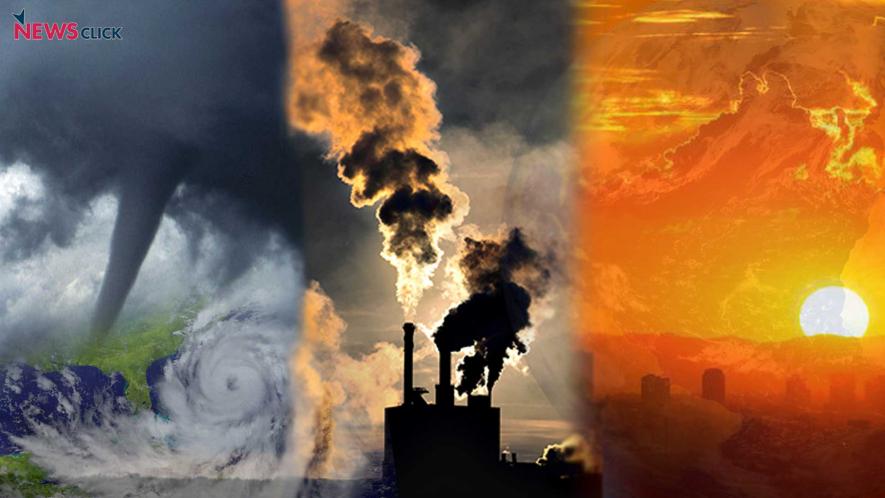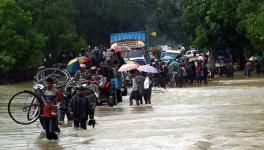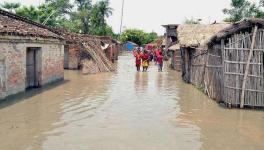India Faces Highest Labour Loss Due to Climate Change, Says Study

India is one of the countries to have experienced the highest loss in labour due to global warming, according to a recent study led by Duke University researchers. The study, which was published in Nature Communications on December 14, 2021, projected that economic losses associated with this lost productivity could reach up to $1.6 trillion (Rs 1.6 lakh crore) annually if warming exceeds an additional 2 degrees Celsius relative to the present.
The study found that with rising heat and humidity levels because of climate change, options for moving outdoor labour to cooler hours will dramatically shrink, leading to significant worldwide labour losses. If that happens, labour losses in the coolest half of the day will exceed current losses in the hottest half, according to the researchers.
Workers in many low-latitude locations already experience heat exposure that makes physical labour unsafe. Labour productivity losses associated with reductions in work rate due to heat exposure can be as high as approximately 280–311 billion US dollars per year, most of which are due to losses in low- and middle-income countries in heavy manual labour, such as agriculture and construction, said the study. “In the coming century, human-driven warming of the planet will push many low-latitude regions even further into uncomfortable and unsafe conditions for outdoor labour, with heat exposure increasing relatively linearly as a function of global temperatures,” it said.
Labour losses from heat exposure are spatially variable, with several countries in southwest Asia, South Asia and Africa that already experience per-capita, 12-hour workday labour losses. India showed the largest heat exposure impacts on heavy labour among South Asian countries (greater than 101 billion hours lost / year), despite its modest average per-capita labour losses (162 lost hours a person a year).
Large population-weighted labour losses (>10 billion hours/year) in other countries such as Pakistan, Bangladesh, and China are driven by a combination of large working-age populations, seasonal heat exposure, and large fractions of the population that work in agriculture and construction industries, the study said. “Under future warming, India, China, Pakistan, and Indonesia experience the largest population-weighted labour losses and associated economic productivity impacts, despite having lower national-average per-capita losses than other countries with smaller populations in Southeast Asia and tropical Africa. Bangladesh is a notable exception as it shows large per capita as well as population-weighted labour losses currently and with warming,” the report said.
Basic adaptation measures may help reduce impacts of increasing future heat for outdoor workers, the study said. These measures include ensuring adequate hydration, rest breaks in the shade, acclimatisation to heat, personal cooling strategies, and moving work hours to cooler parts of the day. “In locations where regulations designed to protect workers from heat are not in place, workers are already shifting schedules to limit heat exposure,” it said. The study added that changes in work hours must consider implications for worker health and well-being, competing hazards from shifting work times, and industry-specific aspects.
“A comprehensive understanding of potential heat exposure and health costs and benefits of shifting work times is needed to weigh trade-offs and to inform decision-making and policies that support adaptation to heat. Previous work has focused on quantifying lost hours due to heat exposure in the 12-hour workday or on how many work hours would need to be moved to the morning to maintain productivity, but so far the feasibility of moving work hours as an adaptation mechanism has not been quantified on a global scale,” the study said.
It highlighted that heat exposure is also implicated as a potential contributing factor to an epidemic of chronic kidney disease in otherwise healthy, relatively young workers in Central America, Sri Lanka, India, and Egypt, and other areas. Heat exposure can also increase the absorption of certain chemicals and is associated with adverse pregnancy and mental health outcomes.
Luke Parsons, a climate researcher at Duke’s Nicholas School of the Environment, who led the study, said: “Our analysis shows that if we limit warming to within another degree of current levels, we can still avoid most worker productivity losses by moving heavy labour to the early morning hours. But if warming exceeds 1° Celsius, that becomes much more difficult. It’s a sliding curve, and gets exponentially worse as the temperature rises.”
Get the latest reports & analysis with people's perspective on Protests, movements & deep analytical videos, discussions of the current affairs in your Telegram app. Subscribe to NewsClick's Telegram channel & get Real-Time updates on stories, as they get published on our website.























